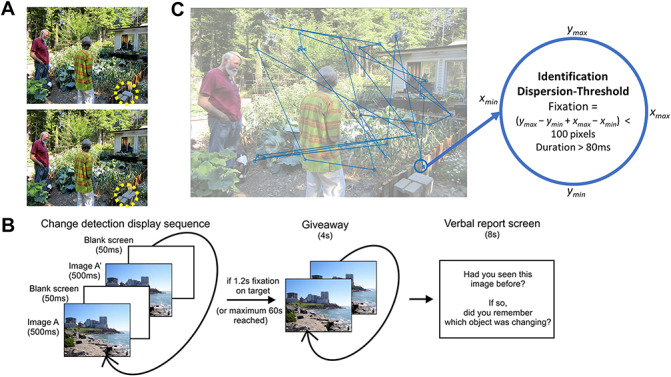Figure 1.

Behavioral task and fixation detection. (A) Sample visual stimulus with target objects such as a disappearing plant shown circled in yellow. (B) A trial sequence which shows the image switching between the two stimuli for target search. Giveaway is when the target is found, or time has passed, and participants then report on whether or not they have seen image. (C) Fixation events from a sample subject. Each fixation event is detected using an algorithm provided by the manufacturer of the eye tracker. As can be seen here, a fixation must stay within the 100 pixel dispersion for at least 80 ms to be considered a fixation event. The end of a fixation event is considered the start of the subsequent saccade.
